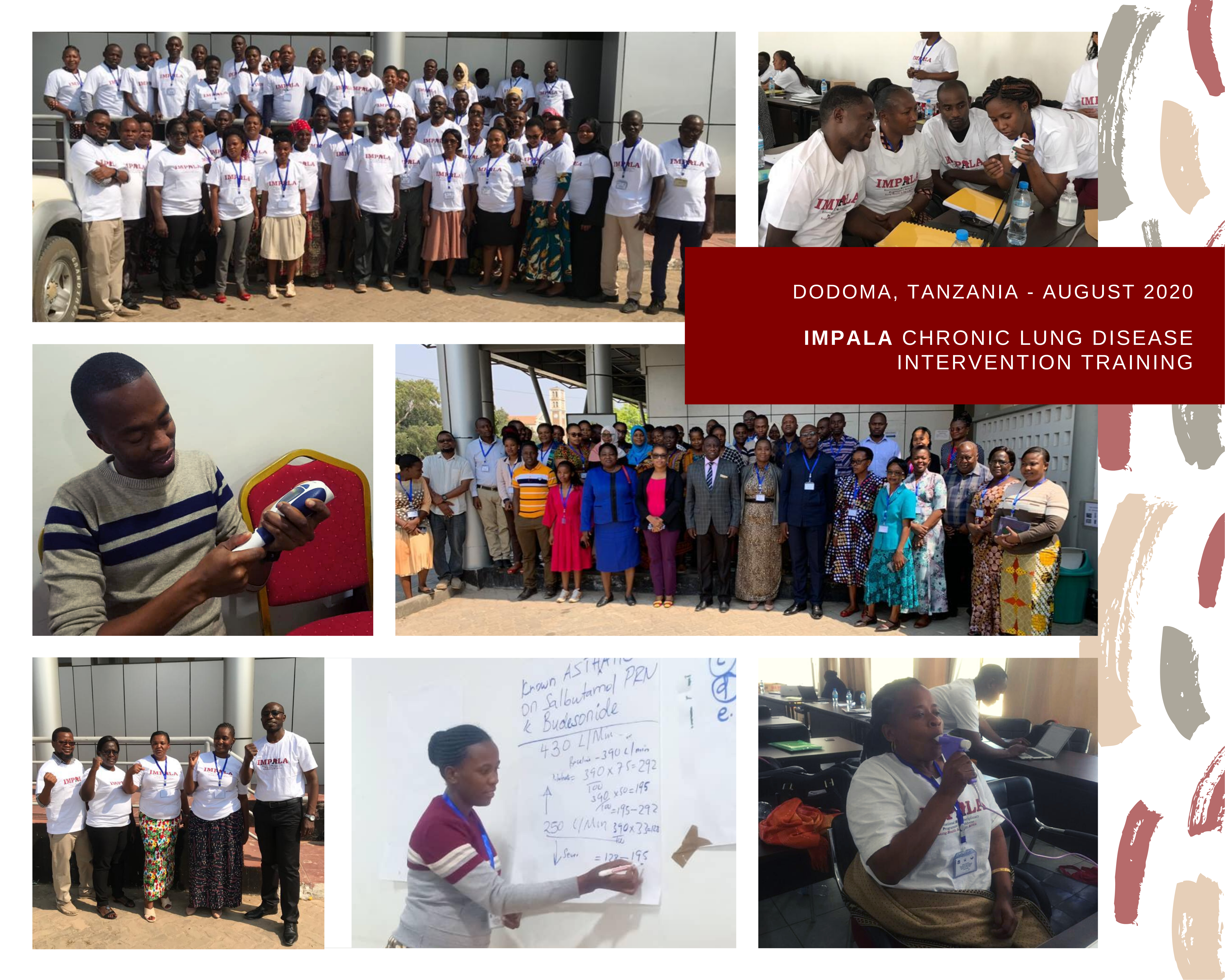
As part of the intervention implementation phase of IMPALA’s joint Health Systems and Applied Social Sciences project in Tanzania, training in management of chronic lung diseases (CLD) and use of CLD diagnostic equipment was provided for health workers from health facilities where intervention is being implemented. Honourable guests were invited to the training, including Dr Ntuli A. Kapologwe – Director for Health Services at the President’s Office –Regional Administration and Local Government (PoRALG) of Tanzania.
Training was aimed at providing health workers with up to date contextual knowledge of CLD including standard case definitions for specific CLDs, risk factors to CLDs & risk avoidance strategies, understanding of the IMPALA-developed CLD diagnostic algorithm & clinical management, patient path-ways and the use of the newly purchased diagnosed equipment (peak-flow meter and spirometry) including how to deploy them in clinical settings, calibration & quality control, and interpretation of results & follow up of patients. Health workers were also trained on the data capturing tools including the developed patients’ card, registers and monthly report forms. Training was also provided to the community health workers who provide a link between health facility and community, their key role being identifying all presumed CLD cases and referring them to the health facilities.
Prior to training, Spirometers and peak flow meters were purchased. Participants were then trained on how to apply them and after the training they were distributed to the intervention health facilities. The training module for health facility workers was developed by IMPALA’s Tanzania team (Stella Mpagama and Nyanda Elias) in collaboration with Lindsay Zurba of Education for Health Africa - an IMPALA investigator and lead spirometry trainer for PATS-MECOR, while community materials were led by Lilian Ishengoma. Experts from Ministry of Health, PoRALG and Kibong’oto Infectious Disease Hospital were invited in the materials development under the coordination of the PDRA (Elizabeth Shayo). IMPALA partners from LSTM and Sudan were also part of the training materials development. Training targeted mainly health workers who attend to potential CLD patients across all levels of the health system and where diagnostic equipment had been placed.
Training of trainers (TOT) was provided to the Tanzanian trainers online, facilitated by Lindsay Zurba and focused mainly on the CLD diagnostic equipment. The TOT was possible as all trainers had previously received competency-based training on the use of spirometry with Lindsay. This was followed by a 5-day on-site training facilitated by the in-country trainers and involved didactic presentations, group discussions, and practical sessions on the topics outlined above. Clinical settings involving CLD patients and their management were simulated. In addition, actual CLD patients in the health facility were examined and investigated using the Spirometer and peak flow meter, to provide a real-life experience for trainees.
Altogether, 5 Physicians, 5 Medical Doctors, 3 Assistant Medical Officers, 6 Clinical Officers, 1 lab technician, 11 Nurses of different levels and 20 Community Health Workers were trained.
This training was carried out in accordance with local Ministry of Health COVID-19 guidance.
About the project:
IMPALA is a four-year collaborative programme operating across 10 African countries to generate knowledge and implementable solutions for high burden, under-funded and under-researched lung health problems and TB. Uzochukwu Egere & Elizabeth Shayo work on a joint Health Systems/Applied Social Sciences project supported by two in-country teams investigating an integrated health systems approach for improving health services for chronic lung disease in Sudan and Tanzania.
This research was funded by the National Institute for Health Research (NIHR) (IMPALA, grant reference 16/136/35) using UK aid from the UK Government to support global health research. The views expressed in this publication are those of the author(s) and not necessarily those of the NIHR or the UK Department of Health and Social Care.”
We thank National Institute for Medical Research (NIMR) in Tanzania, IMPALA, and LSTM for making this work possible.